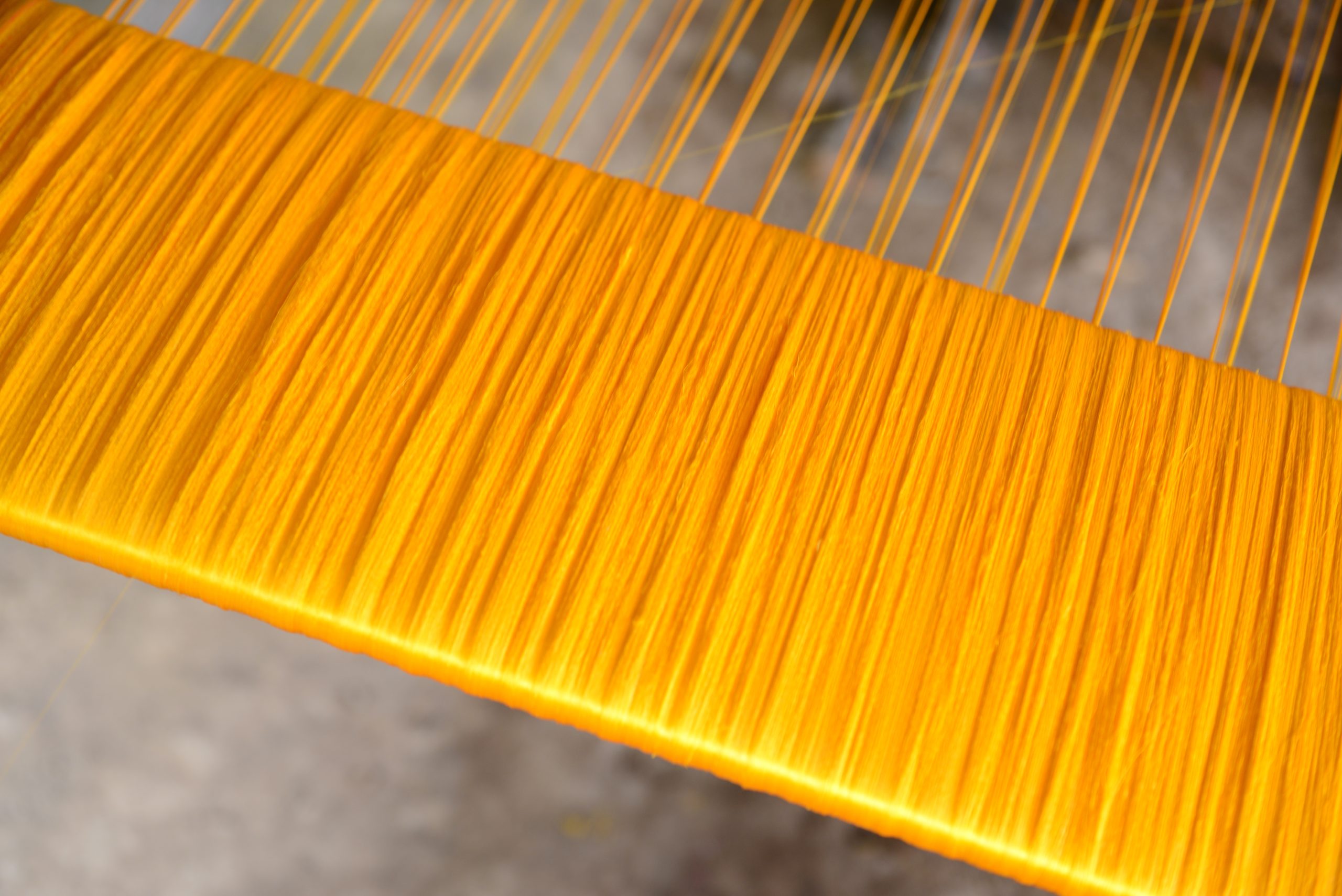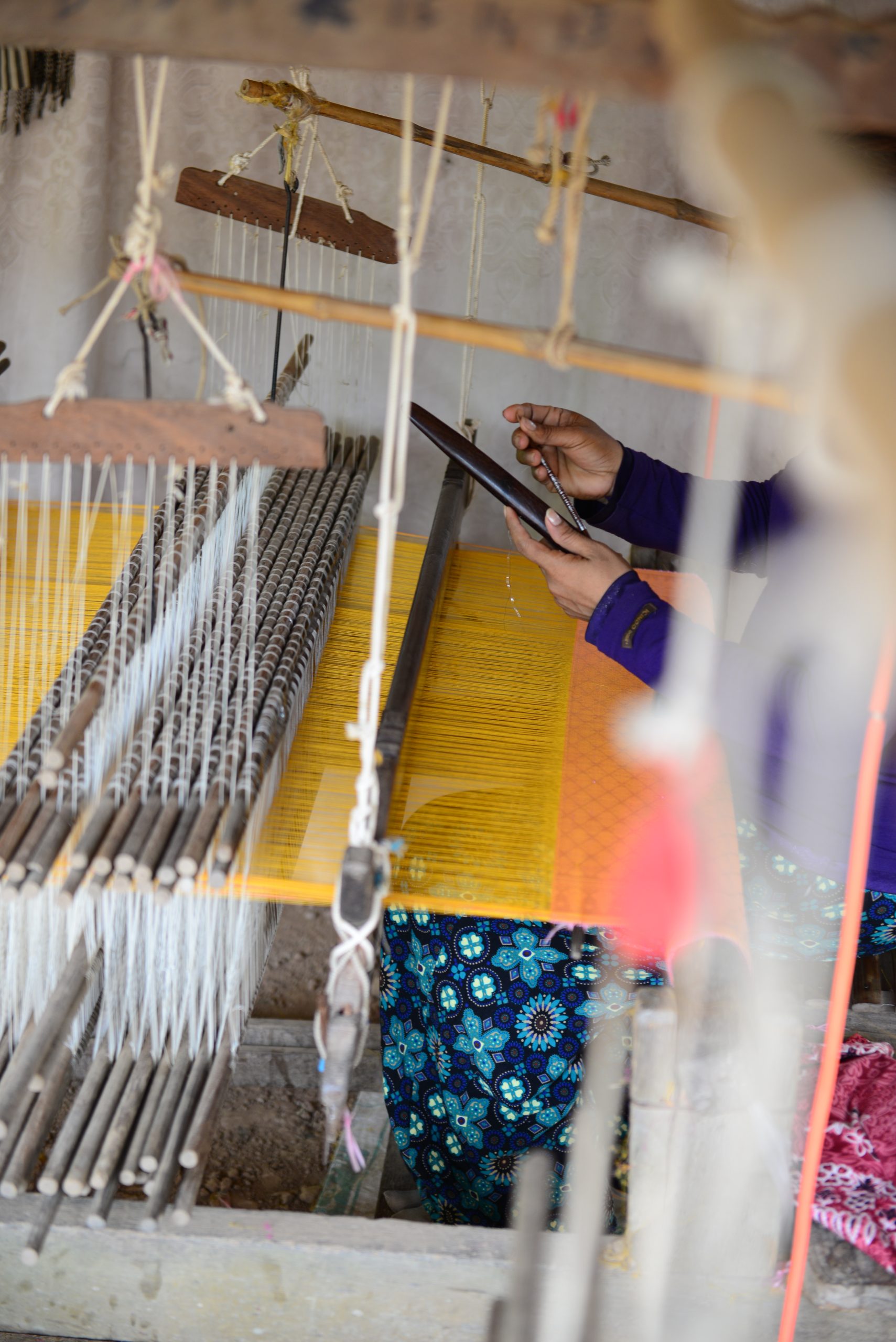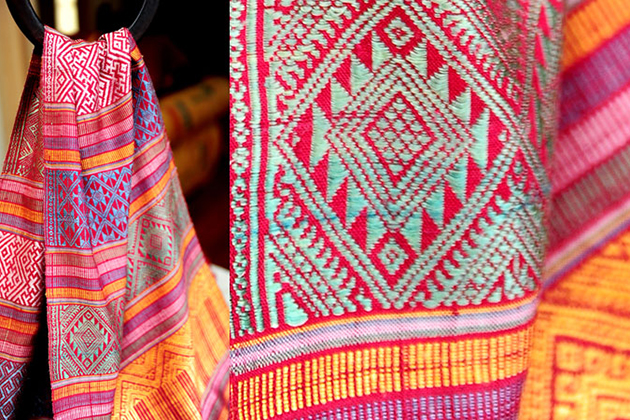Threads of Culture: Exploring Cambodia’s Silk Weaving Tradition
Welcome to Cambodia, a land of ancient traditions and vibrant cultural heritage. Nestled within the heart of this beautiful country lies a rich and intricate world of silk weaving. In this travel blog, Green Sun Travel invites you to embark on a journey with us to discover the hidden gems of Cambodia’s silk weaving tradition. From the bustling streets of Phnom Penh to the serene countryside villages, we’ll take you on an exploration of the artistry, history, and significance of silk weaving in this enchanting nation.
The History of Cambodia’s Silk Weaving Tradition
Our exploration of Cambodia’s silk weaving tradition begins with an intriguing dive into its historical roots. Silk weaving is a tradition that has been intertwined with Cambodia’s rich cultural heritage for centuries. To truly understand the significance of this art, we must journey back in time to the days of the ancient Khmer empire.
The Khmer empire, which thrived between the 9th and 15th centuries, was known for its opulence and grandeur. Silk was a symbol of wealth and prestige, and it played a pivotal role in the royal courts. The intricate silk textiles produced during this era were not only used for clothing but also as offerings to the gods in temples and as diplomatic gifts to foreign dignitaries. The Khmer people, particularly the weavers, held a revered place in society due to their remarkable skills in creating exquisite silk fabrics.
Through the centuries, this tradition of silk weaving in Cambodia has been diligently passed down through generations. Families and communities have preserved the techniques, designs, and cultural significance of silk production. The enduring legacy of Cambodian silk weaving is a testament to the deep-rooted cultural value it holds.
Today, Cambodian silk weaving is not merely a craft but a living piece of history that thrives in a modern world. Skilled artisans, some of whom are descendants of those ancient weavers, continue to practice this art, keeping it alive and vibrant.

Phnom Penh – The Silk Hub
As we continue our journey into the heart of Cambodia’s silk weaving tradition, we arrive in the bustling capital city of Phnom Penh. Here, you will have the opportunity to immerse yourself in the vibrant world of Cambodian silk, and understand why Phnom Penh is considered the silk hub of the nation.
The city’s markets and workshops are a testament to the enduring allure of silk in Cambodian culture. You can wander through bustling markets where colorful silk fabrics and garments are on display, and artisans are diligently crafting their wares. The intricate patterns and rich colors are a feast for the eyes, and it’s hard not to be captivated by the artistry on display.
Visiting silk workshops in Phnom Penh provides a unique opportunity to witness the entire silk-making process. From the nurturing of silkworms and the delicate process of silk reeling to the weaving of intricate designs, you’ll gain a deep appreciation for the skill and dedication of the artisans.
Moreover, Phnom Penh is a hub for organizations and initiatives that are committed to preserving this age-old tradition. You’ll learn about the various ways these entities support local weavers, promote ethical and sustainable silk production, and ensure that the legacy of Cambodian silk weaving continues to flourish. This chapter of our journey provides a firsthand experience of how Cambodia’s silk weaving culture is thriving in the modern world while maintaining its deep historical roots.
The Silk Villages of Siem Reap
A visit to Cambodia Siem Reap, renowned for its awe-inspiring Angkor Wat, is a journey into the heart of both ancient history and vibrant contemporary culture. While the temples of Angkor are undeniably a highlight, our journey takes us beyond the stone structures and into the surrounding silk villages, where you’ll experience the enduring traditions of silk weaving in rural communities.
These silk villages provide a captivating contrast to the urban hustle and bustle. Here, in tranquil rural settings, you’ll witness the silk-making process from its most humble beginnings – the silkworms. Local families raise silkworms, carefully tending to their needs as they spin their cocoons. It’s a meticulous and time-honored practice that results in the creation of the raw material for Cambodian silk.
Your journey doesn’t stop there. You’ll have the unique opportunity to participate in the entire process. Under the guidance of skilled local artisans, you can try your hand at various steps, including silk reeling and weaving. This hands-on experience allows you to appreciate the precision and patience required to transform raw silk into the stunning fabrics you see in markets and workshops.
By immersing yourself in these silk villages, you’ll not only witness the intricacies of silk production but also connect with the people who have preserved this ancient tradition for generations. Their dedication to this craft and their cultural heritage is a testament to the enduring spirit of Cambodian’s silk weaving.
The Artistry of Cambodian Silk
Cambodian silk is not just a textile; it’s a canvas for artistic expression. This chapter delves into the remarkable artistry that adorns Cambodian silk textiles. The intricate designs, vibrant colors, and captivating patterns that grace these fabrics are a testament to the incredible skill of Cambodian weavers.
You’ll explore the significance of various motifs and patterns. For instance, the lotus flower, a symbol of purity and enlightenment in Buddhist culture, often features prominently in Cambodian silk designs. Additionally, mythical creatures and traditional symbols are woven into the fabric, each carrying its own cultural and historical significance.
The process of creating these intricate patterns is a labor of love, with weavers often drawing inspiration from nature, mythology, and the stories of their ancestors. The attention to detail and the patience required to produce these works of art make Cambodian silk truly exceptional.
By delving into the artistry of Cambodian silk, you’ll gain a profound appreciation for the creativity and craftsmanship that goes into every piece. The stories and symbolism woven into these textiles add a layer of depth to each silk creation, making them not just beautiful but culturally significant.
The Role of Silk in Cambodian Culture

Silk in Cambodia is more than just a fabric; it’s deeply interwoven with the cultural tapestry of the nation. This chapter will take you on a journey into the multifaceted role of silk in Cambodian culture, where it plays a significant part in ceremonies, rituals, and everyday life.
In traditional Khmer weddings, silk is a key element. The bride and groom often wear elaborately woven silk garments, symbolizing their purity and union. These garments are not only beautiful but also laden with cultural significance, emphasizing the importance of family, tradition, and the continuity of Khmer culture.
Pagoda offerings, an integral part of Buddhist tradition, often include silk textiles. These offerings are a sign of respect and devotion, and they play a role in ceremonies and rituals conducted within the pagoda walls. The shimmering beauty of silk adds a sense of reverence to these religious occasions.
Silk also plays a central role in traditional dance costumes. Cambodian classical dance, like Apsara and Khmer ballet, often features performers adorned in splendid silk costumes that enhance the visual and artistic appeal of these ancient dance forms. The flowing, colorful silk adds an enchanting dimension to the storytelling and cultural representation in these performances.
By delving into the role of silk in Cambodian culture, you’ll gain a deeper appreciation for how this fabric is not merely a material but a living thread that binds the nation’s cultural and spiritual heritage. Silk in Cambodia is a symbol of continuity, tradition, and the enduring spirit of its people.
Sustainable Silk Production
While Cambodia’s silk weaving tradition is rich and deeply ingrained in its culture, modern challenges like environmental sustainability and ethical practices have prompted a shift towards responsible silk production. In this chapter, we explore the various efforts being made to ensure the sustainability of Cambodian silk weaving.
Eco-friendly Practices: Many silk production facilities and weaving communities have embraced eco-friendly practices. These practices encompass sustainable mulberry farming, natural dyeing methods, and responsible water management. By using organic and locally sourced materials, silk production has become less harmful to the environment.
Ethical Silk Production: Ethical silk production practices are gaining traction in Cambodia. This includes fair wages for weavers, improved working conditions, and support for weavers’ families and communities. Organizations and cooperatives have emerged to ensure that the labor force behind Cambodian silk is treated with the dignity and respect they deserve.
Preservation of Natural Resources: The silk industry is closely linked with natural resources such as mulberry trees, which serve as food for silkworms. Initiatives have been launched to conserve these resources, encouraging the planting and care of mulberry trees. This not only ensures a sustainable source of silk but also contributes to the preservation of Cambodia’s natural environment.
Community Empowerment: Silk weaving has also been a catalyst for community empowerment. Several projects focus on training and equipping local weavers with the skills and knowledge needed to continue their craft in an ethical and sustainable way. This helps safeguard the livelihoods of weavers and their communities.
Waste Reduction: Reducing waste in the silk production process is another aspect of sustainability. Innovative techniques aim to minimize waste in both the silk reeling and weaving stages. This helps in using resources efficiently and minimizing the environmental footprint.
Bringing a Piece of Cambodia Home
As our journey through Cambodia’s silk weaving tradition nears its conclusion, we provide you with a practical guide on how to bring a piece of this vibrant culture back with you. From silk scarves and traditional garments to home décor and accessories, authentic Cambodian silk products are both beautiful and meaningful.
Selecting Authentic Products: It’s essential to source authentic Cambodian silk products. While markets and shops offer a wide range of choices, look for products that are labeled as “handwoven” or “traditional Cambodian silk.” This ensures that your purchase directly supports local weavers.
Supporting Local Artisans: Engage with the artisans themselves whenever possible. Visiting local silk workshops and cooperatives allows you to meet the people behind the craft and understand the significance of your purchase.
Ethical Considerations: Verify that the products you buy align with ethical practices. Many initiatives, as mentioned in the previous chapter, are committed to ensuring fair wages and ethical conditions for silk weavers. Supporting such products contributes to a sustainable future for Cambodia’s silk industry.
Choosing Souvenirs with Cultural Significance: Explore the symbolism and stories behind various silk patterns and motifs. Whether it’s the lotus flower symbolizing purity or traditional patterns reflecting Cambodian heritage, choosing souvenirs with cultural significance adds an extra layer of meaning to your purchase.
Preserving Cambodian Silk: Once you bring Cambodian silk home, take care to preserve its beauty. Follow care instructions to ensure the longevity of your silk products, allowing them to serve as a lasting reminder of your journey.
Conclusion: A Tapestry of Memories
As our journey through Cambodia’s silk weaving tradition comes to an end, you’ll leave with a deeper understanding of this age-old tradition, the people who keep it alive, and the beauty it brings to the world. Cambodia’s silk weaving is not just a craft; it’s a tapestry of stories, symbols, and artistry that has been woven through generations. We hope this travel blog inspires you to explore this incredible culture and its hidden gems in the heart of Southeast Asia.








Daftar untuk mendapatkan 100 USDT
Your point of view caught my eye and was very interesting. Thanks. I have a question for you.
March 12, 2024 at 3:35 am
Зарегистрируйтесь, чтобы получить 100 USDT
I don’t think the title of your article matches the content lol. Just kidding, mainly because I had some doubts after reading the article.
March 23, 2024 at 4:27 am